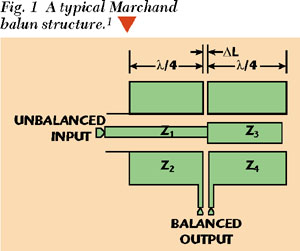Mikebits
Well-Known Member
Greetings RF dudes. Using the normalized filter table (see table 1.), I worked out the numbers for a (5n) 868 MHz low pass filter (LPF). That was easy enough, but my results produce some values that are real small, (very small). I thought perhaps I could scale the load impedance (ZL) up or down, then match the scaled ZL with a balun. Using the equations for component values: L = (RL*Ln)/ω : C = Cn/(ω*RL). So you can see, if I scale ZL up I can have larger inductor values, but cap values will decrease, and vice a versa.
The values I have are 2.27 pf, 7.33 pf, and 14.8 nh. Now I can get these values but what I am concerned with is that the tolerances at smaller values can make a larger error where large values will be less critical as it pertains to tolerance. So I was just wondering if there are any tricks I can use to scale up my components? The reason I care is that I do not have a way to test the filter at 868 MHz, so what I am relying on is (by design) it should work.
Thanks
Table 1.
Order RS C1 L2 C3 L4 C5 L6 C7
a1 a2 a3 a4 a5 a6 a7
1 1.0 2.0000
2 1.0 1.4142 1.4142
3 1.0 1.0000 2.0000 1.0000
4 1.0 0.7654 1.8478 1.8478 0.7654
5 1.0 0.6180 1.6180 2.0000 1.6180 0.6180
6 1.0 0.5176 1.4142 1.9319 1.9319 1.4142 0.5176
7 1.0 0.4450 1.2470 1.8019 2.0000 1.8019 1.2470 0.4450
The values I have are 2.27 pf, 7.33 pf, and 14.8 nh. Now I can get these values but what I am concerned with is that the tolerances at smaller values can make a larger error where large values will be less critical as it pertains to tolerance. So I was just wondering if there are any tricks I can use to scale up my components? The reason I care is that I do not have a way to test the filter at 868 MHz, so what I am relying on is (by design) it should work.
Thanks
Table 1.
Order RS C1 L2 C3 L4 C5 L6 C7
a1 a2 a3 a4 a5 a6 a7
1 1.0 2.0000
2 1.0 1.4142 1.4142
3 1.0 1.0000 2.0000 1.0000
4 1.0 0.7654 1.8478 1.8478 0.7654
5 1.0 0.6180 1.6180 2.0000 1.6180 0.6180
6 1.0 0.5176 1.4142 1.9319 1.9319 1.4142 0.5176
7 1.0 0.4450 1.2470 1.8019 2.0000 1.8019 1.2470 0.4450




